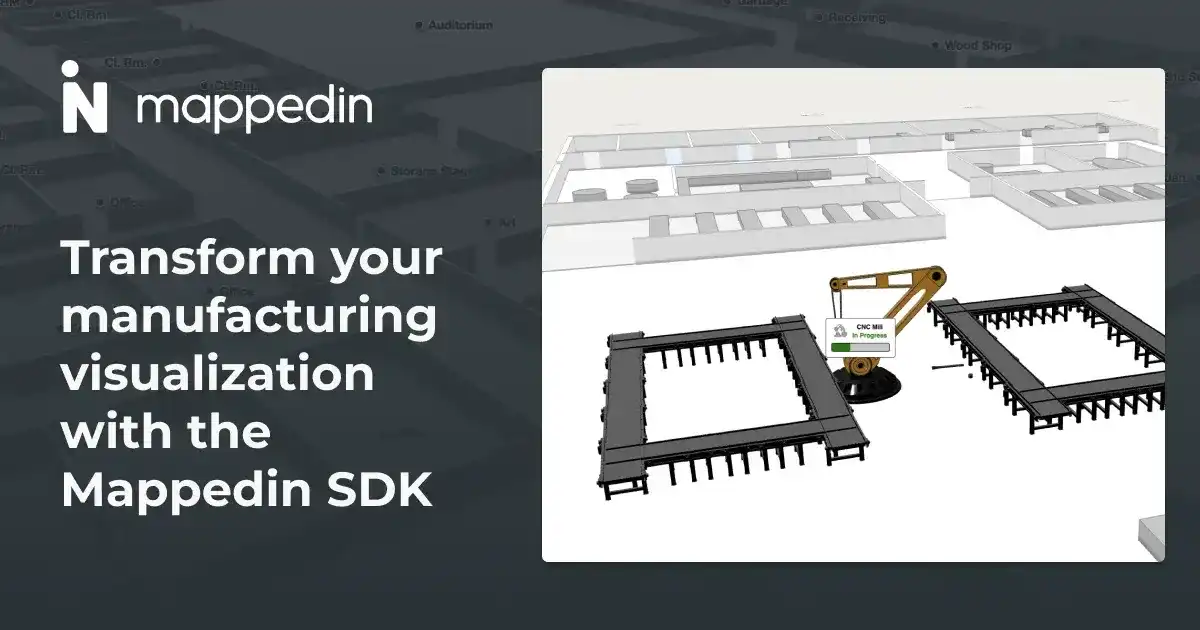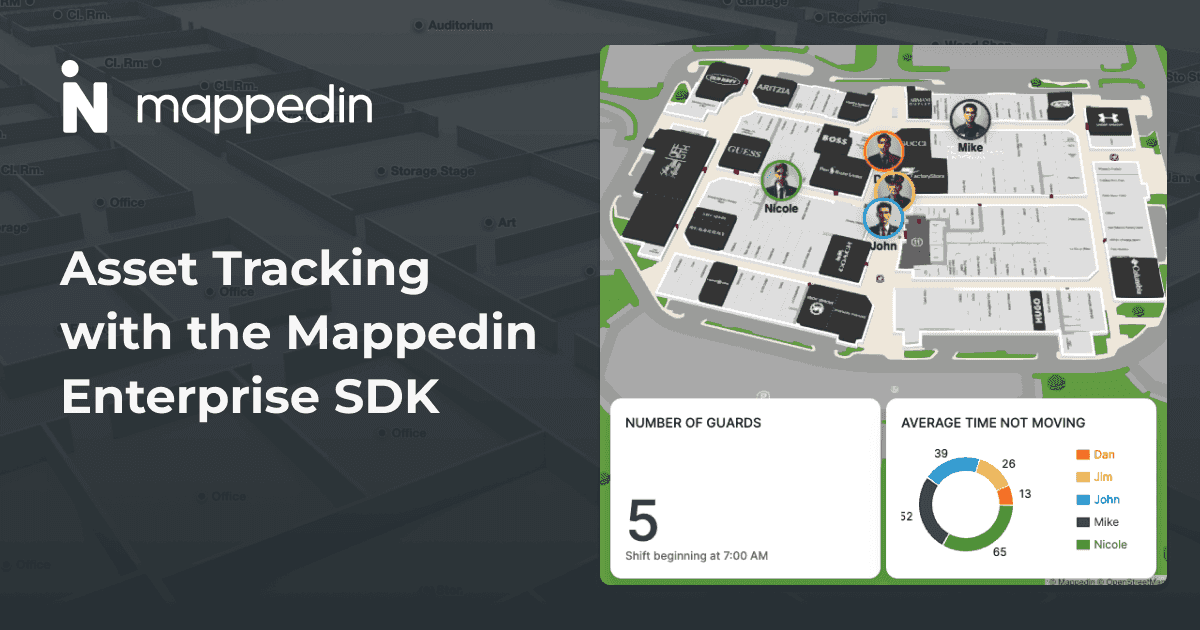Asset tracking is a crucial business component in certain industries and done correctly, can save businesses valuable time and money. Indoor mapping is a perfect way to visualize location data and intelligence that is collected by asset tracking software.
What is asset tracking & how it works
Asset tracking refers to the method of tracking physical assets, whether inventory, machinery, people, or devices. Asset tracking provides building owners and operators with valuable information to streamline their business operations and increase efficiencies. Paired with a digital indoor map, asset tracking and management is taken to the next level by creating new efficiencies and experiences.
What is asset tracking software?
Asset tracking software is a type of software that enables tracking the movement of various assets, IT devices, pieces of equipment, and other items within a specific environment. This software is typically used in combination with indoor positioning and digital mapping tools.
Why is asset tracking important?
Asset tracking provides businesses with a wealth of accurate information. It is extremely important to have a detailed asset management system for your assets in order to cut costs, improve efficiency, and locate lost assets.

Benefits of asset tracking
There are several benefits for businesses who implement asset tracking, including:
- Improve efficiency and reduce costs
- Accurate data on exact position of assets and their usage
- Quickly and easily locate assets in real-time
- Lower administrative costs of manually tracking assets
- Generate real-time reports on the position of each asset
- Ensure accountability and accuracy with asset loss and management
- Increased information and context surrounding your venue’s physical space and how assets move around
Track and maintain your assets to keep operations running smoothly
Integrated asset tracking technology helps businesses keep operations running smoothly by providing instant access to data such as asset life cycles, upcoming scheduled maintenance and maintenance history, equipment condition, as well as the location history of current assets. This information can be crucial in implementing cost control measures and ultimately influence financial business outcomes.

How to track your assets
There are several types of asset tracking but the most common types include RFID, IoT, or GPS-based asset tracking. Let’s explore these in further detail.
RFID asset tracking
There are two general types of RFID tags, each with its own capabilities and benefits. The first is active RFID tags, which are typically larger and more expensive, but offer longer read ranges. Beacons and transponders are examples of active RFID tags, both of which have a built-in transmitter and an internal battery for power.
Passive tags, on the other hand, are smaller, more flexible, and less expensive, but have the disadvantage of a shorter read range. They are powered by the radio frequency energy transmitted from RFID readers or antennas which bounces from the RFID tag back to the reader to determine its location. Passive RFID tags are commonly used for item-level tracking (e.g. consumer goods), whereas active tags are preferable for larger assets such as vehicles or shipping containers.
GPS-based asset tracking
The second type of asset tracking is GPS-based. Global Positioning System (GPS) tracking was initially used for the purpose of vehicle fleet management and understanding the real-time location and movement of trucks or other vehicles. Today, however, GPS asset trackers can be used for business operations to monitor the movement of assets and inventory indoors as well as outdoors.

In order to ensure accuracy of data across the indoors, businesses should implement indoor positioning systems (IPS). This technology is one of many located based services and provides real-time location data on critical assets.
Internet of Things (IoT)
IoT portrays a network of physical objects that are embedded with sensors, software, and other technologies. The purpose of IoT implementations is to connect each of these systems and exchange information, in some cases providing real-time tracking information.
Location intelligence
Location intelligence, or spatial intelligence, is the process of deriving meaningful insight from geospatial data to solve a particular challenge. Location intelligence relates to asset tracking solutions as it provides the most up-to-date information in order to make informed decisions about asset tracking processes and analysis.
Why use Mappedin?
In order to track assets effectively, businesses must understand where inventory, critical machinery, and so on are located in the context of the building. Indoor mapping works hand-in-hand with asset tracking as a way to visualize the various data points. To ensure the most accurate data is collected and displayed, these indoor maps should be kept up-to-date as floor plans, layouts, and building structures change over time.

Mappedin is the leading provider of indoor maps and map management tools. Our powerful map editor is used by businesses spanning across a number of unique industries in order to create, edit, and maintain indoor floor plans over time. Mappedin Venue Format (MVF) is a geoJSON based format that provides customers with geometry and location data associated with their venue and is directly connected to the Mappedin CMS. MVF can be used to build 2D mapping experiences or converted with a variety of 3D renderers, including Mappedin’s.
Asset tracking frequently asked questions
What is an asset management tool?
Asset Management software integrates the various elements of tracking assets into one interface. Rather than relying on hard copies of paper or manual spreadsheets, these software tools help keep all of the assets in one system and update them when they need maintenance or need to be replaced. Tracking physical assets and having a record of their movement and real-time location is extremely important.
What Industries use asset tracking?
Several industries use asset tracking on a daily basis, including manufacturing, healthcare, corporate buildings, warehouses, military, stadiums, and airports. Hospitals might track medical equipment or handheld devices, manufacturing or construction sites might track machinery to avoid equipment theft and replacement costs, offices might use asset tracking devices to monitor valuable assets and office equipment, and so on.
How to choose the right asset tracking system?
Choosing the right enterprise asset management solution is important. In order to make an informed decision, you should consider factors such as:
- Accessibility
- Mobility
- Features
- Scalability
- Support
- Cost
Contact us to learn more.
Tagged In
Share



